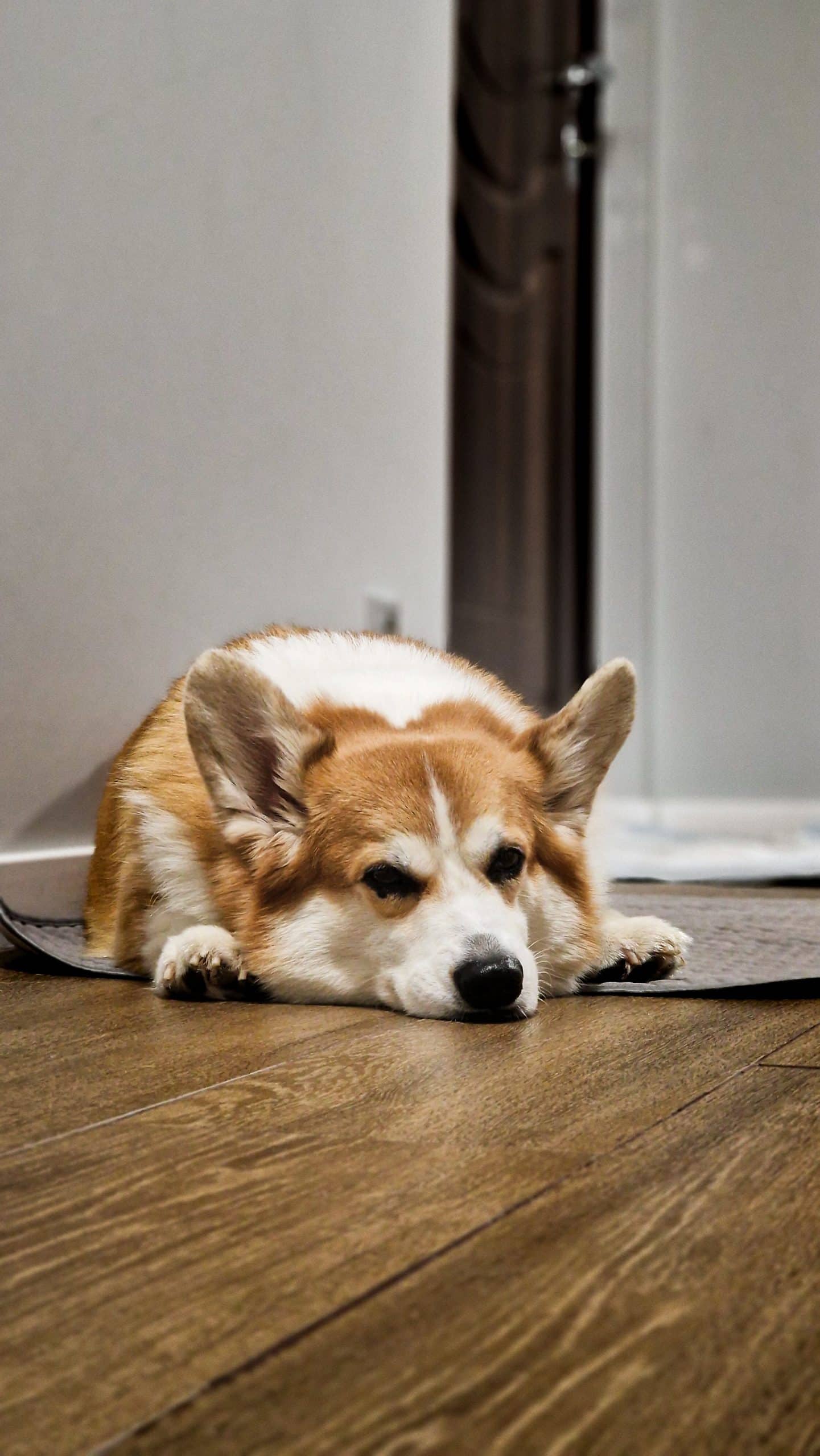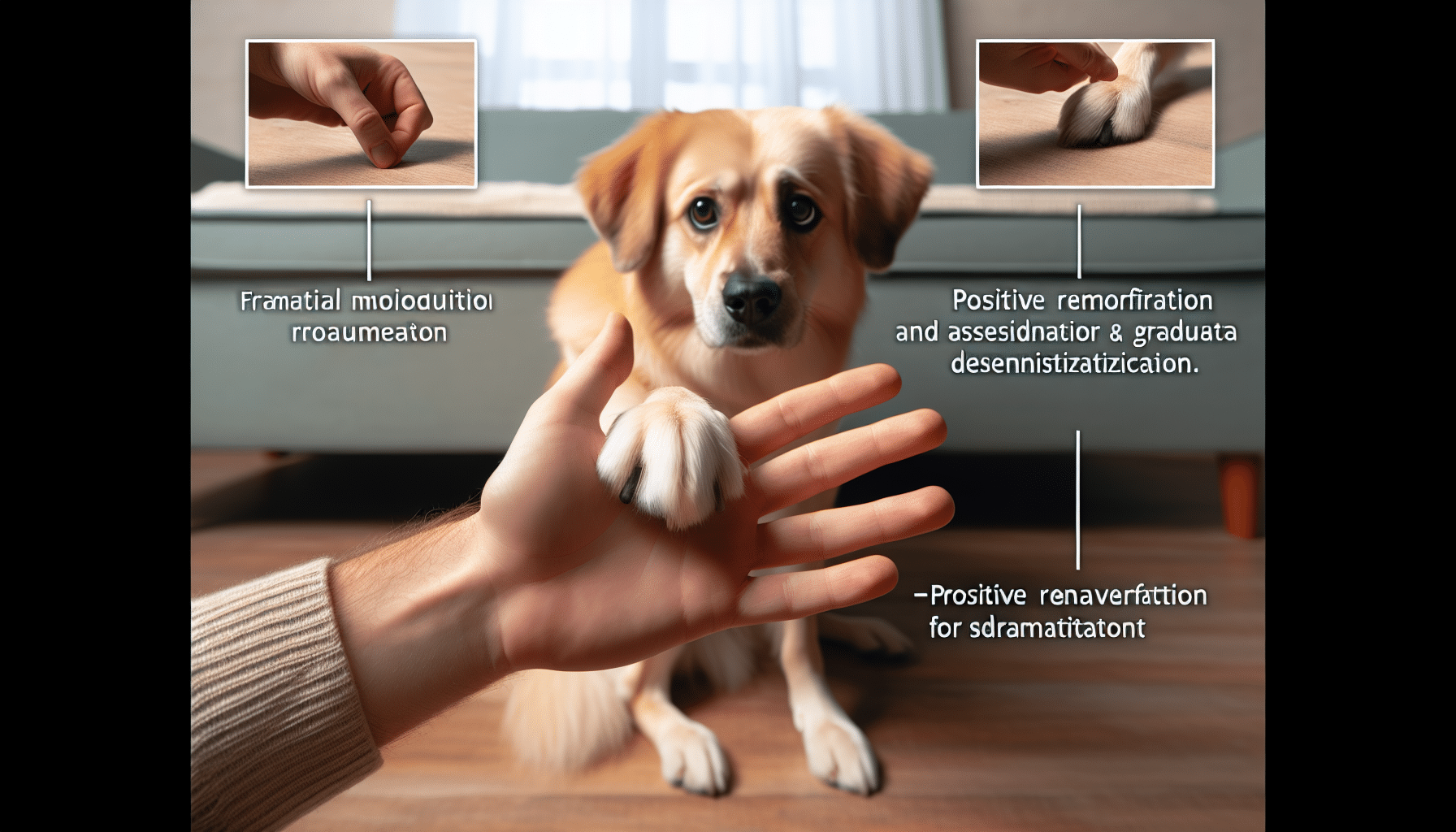Are you a dog owner struggling with the challenges of separation anxiety? Look no further! In this article, you will discover effective training methods specifically tailored for dogs experiencing separation anxiety. Say goodbye to excessive barking, destructive behavior, and those heartbreaking goodbye whimpers. With customized training plans, you can help your furry friend overcome their distress and create a harmonious environment for both of you. Let's embark on this journey together and empower your pup to thrive when left alone.
Understanding Separation Anxiety in Dogs
Separation anxiety is a common behavioral issue that many dogs experience when they are left alone. It can manifest in various ways, such as excessive barking, destructive behaviors, or attempts to escape. As a responsible dog owner, it's important to recognize the signs of separation anxiety and understand the underlying causes to effectively address this issue and provide the necessary support for your furry friend.

This image is property of images.pexels.com.
Recognizing the signs of separation anxiety
To address separation anxiety in dogs, it's crucial to first be able to recognize the signs. Some common signs of separation anxiety include excessive barking or howling, destructive chewing or scratching, urination or defecation in the house, attempts to escape, pacing or restlessness, and excessive drooling. If you notice any of these signs when you are about to leave or after you've left your dog alone, it is likely that your canine companion is experiencing separation anxiety.
Determining the underlying causes of separation anxiety
Separation anxiety can have various underlying causes, and understanding them is essential to address the issue effectively. Some common causes of separation anxiety in dogs include a history of abandonment or trauma, changes in routine or environment, lack of proper socialization, or a strong bond with their owner. By identifying the root cause of your dog's separation anxiety, you can tailor your approach and make the necessary adjustments to help them feel more secure and comfortable when alone.
Creating a Safe and Comfortable Environment
Creating a safe and comfortable environment plays a crucial role in helping your dog cope with separation anxiety. By providing a designated safe space and engaging them with interactive toys and puzzles, you can help alleviate their stress and anxiety.
Designating a designated safe space for your dog
Having a designated safe space can provide your dog with a sense of security, even when left alone. This space can be a specific room or area in your home where your dog feels most comfortable. Make sure to include their bed, toys, and any other familiar items that bring them comfort in this space. By consistently using this designated area, your dog will associate it with safety and relaxation, which can help reduce separation anxiety.
Providing interactive toys and puzzles
Interactive toys and puzzles can be a great way to keep your dog mentally stimulated and distracted when alone. These toys can help redirect their focus from their anxiety and provide a positive outlet for their energy. Fill puzzle toys with treats or use interactive toys that dispense treats, as this can provide both mental and physical stimulation for your dog. By keeping their mind busy, you can help alleviate their anxiety and promote a sense of calmness.

This image is property of images.pexels.com.
Using calming aids such as pheromone diffusers
Calming aids, such as pheromone diffusers, can be beneficial in creating a soothing environment for your dog. These diffusers emit synthetic pheromones that mimic the natural scent produced by nursing mother dogs, which can help relax and comfort dogs experiencing separation anxiety. By using pheromone diffusers in your dog's designated safe space, you can provide them with a sense of security and peace, further helping them cope with their anxiety.
Desensitization and Counter-conditioning Techniques
Desensitization and counter-conditioning techniques are effective methods that can gradually help your dog become more comfortable with being alone. These techniques involve exposing your dog to departure cues and associating them with positive experiences to change their emotional response.
Gradual exposure to departure cues
Start by gradually exposing your dog to departure cues, such as picking up your car keys or putting on your shoes, without actually leaving. This helps desensitize your dog to these cues and reduces their anxiety response. Incorporate these cues into your daily routine without following through with leaving, so that your dog begins to associate them with non-threatening situations.
Association of departure cues with positive experiences
Pairing departure cues with positive experiences can help change your dog's emotional response to these cues. For example, give your dog a special treat or engage in a fun play session just before leaving the house. This positive association can help alleviate their anxiety and create a more positive outlook on your departures.
Implementing systematic desensitization
Systematic desensitization involves gradually increasing the duration of your departures while ensuring your dog remains calm and relaxed. Start with very short absences and gradually increase the time you spend away from home. This technique helps your dog build confidence and learn that being alone is not something to be feared. Gradual exposure combined with positive reinforcement can significantly reduce separation anxiety and promote a sense of independence in your dog.
Management Strategies for Separation Anxiety
While training techniques are essential for addressing separation anxiety, implementing management strategies can also provide immediate support for your dog. These strategies focus on creating a predictable routine, avoiding extended departures and arrivals, and utilizing technology to monitor your dog's behavior.

This image is property of images.pexels.com.
Establishing a predictable daily routine
Dogs thrive on routine, and having a predictable daily routine can help alleviate their anxiety. Set consistent times for feeding, exercise, playtime, and rest. By establishing a routine, your dog will have a better understanding of what to expect, reducing their stress levels and providing them with a sense of security.
Avoiding prolonged departures and arrivals
Long and dramatic departures and arrivals can worsen your dog's separation anxiety. Avoid prolonged goodbyes or excessive greetings when leaving or returning home. Keep your arrivals and departures calm and low-key to help normalize the experience for your dog. By minimizing the excitement surrounding these moments, you can help reduce their anxiety levels.
Using a pet cam to monitor your dog's behavior
Technology can be a valuable tool in managing separation anxiety. Consider using a pet cam to monitor your dog's behavior when you are not at home. This allows you to understand how your dog reacts to your departures, measure their progress, and detect any potential issues or setbacks. Being able to observe your dog's behavior remotely can provide peace of mind and help you make informed decisions regarding their training and management.
Positive Reinforcement Training
Positive reinforcement training is a powerful tool in addressing separation anxiety and fostering independence in your dog. By using reward-based training, teaching relaxation and self-soothing behaviors, and imparting coping mechanisms through obedience training, you can help your dog overcome their separation anxiety.
Reward-based training for independence
Reward-based training involves rewarding your dog for desired behaviors. When it comes to separation anxiety, rewarding your dog for displaying independence and calmness can help reinforce positive behaviors. For example, reward your dog after they have spent a certain amount of time alone without showing signs of anxiety. This positive reinforcement encourages your dog to associate being alone with positive experiences.

Teaching relaxation and self-soothing behaviors
Teaching your dog relaxation and self-soothing behaviors can be instrumental in reducing separation anxiety. Practice activities like relaxation exercises, massage, or providing them with a special space where they can retreat when they feel anxious. By teaching your dog to self-soothe, you can empower them to better cope with their anxiety when alone.
Imparting coping mechanisms through obedience training
Obedience training can help your dog develop coping mechanisms and self-control, which are essential in managing separation anxiety. Training sessions can provide mental stimulation and teach your dog to follow commands, diverting their attention away from their anxiety. Consistent obedience training helps build their confidence and provides them with a sense of structure and control.
Medication Options for Separation Anxiety
In some cases, medication may be necessary to manage severe separation anxiety in dogs. Consulting with a veterinarian is crucial to evaluate if medication is appropriate and identify the potential benefits and risks.
Consulting with a veterinarian for medication evaluation
It is essential to consult with a veterinarian who specializes in behavioral issues to evaluate whether medication is suitable for your dog. They will conduct a thorough assessment, considering potential underlying medical conditions and the severity of your dog's separation anxiety. Through this evaluation, they can determine if medication is necessary and discuss the appropriate options.
Understanding the benefits and risks of medication
Medication can help provide temporary relief for dogs with severe separation anxiety. It can help reduce anxiety, calm their nervous system, and enable them to cope better with being alone. However, it is crucial to understand the potential benefits and risks associated with medication. Work closely with your veterinarian to ensure the medication is administered correctly and monitor your dog for any adverse effects.

Combining medication with behavioral training
While medication may help alleviate your dog's separation anxiety, it is not a standalone solution. Combining medication with behavioral training is often the most effective approach. Medication can provide temporary relief, allowing your dog to be more receptive to training techniques. Work with a professional dog trainer to develop a comprehensive plan that incorporates both medication and behavioral training to address your dog's separation anxiety holistically.
Building a Support Network
Dealing with separation anxiety in dogs can be challenging, but you don't have to face it alone. Building a support network of professionals, fellow dog owners, and online communities can provide valuable guidance and emotional support.
Seeking guidance from professional dog trainers
Professional dog trainers specializing in separation anxiety can offer valuable guidance and expertise. They can assess your dog's specific needs, develop a customized training plan, and provide ongoing support. Working with a professional trainer ensures that you are using effective and safe training methods, giving you the confidence and knowledge to help your dog overcome separation anxiety.
Joining support groups or online communities
Joining support groups or online communities dedicated to dog owners dealing with separation anxiety can be incredibly helpful. These groups provide a platform for sharing experiences, seeking advice, and gaining emotional support from others who understand the challenges of separation anxiety. Through these communities, you can find encouragement, practical tips, and a sense of belonging.
Engaging in socialization activities for dogs with separation anxiety
Engaging in socialization activities with other dogs can have a positive impact on dogs with separation anxiety. Arrange playdates or enroll your dog in doggy daycare to provide them with opportunities for social interaction. These activities can help reduce their anxiety by fostering positive experiences with other dogs, improving their confidence, and diverting their attention away from their anxiety when alone.
Troubleshooting Training Challenges
Training a dog with separation anxiety can come with its fair share of challenges. It's essential to be prepared for setbacks and relapses, modify training techniques as needed, and seek professional help when necessary.
Dealing with setbacks and relapses
Setbacks and relapses are a normal part of the training process, especially when it comes to separation anxiety. If your dog displays signs of anxiety or regresses in their progress, it's important to remain patient and persistent. Take a step back, reassess your training plan, and make any necessary adjustments. Remember that progress takes time, and setbacks should not discourage you from continuing the training process.
Modifying training techniques as needed
Each dog is unique, and what works for one may not work for another. It's crucial to be flexible and willing to modify training techniques as needed to suit your dog's specific needs. If you notice that certain techniques are not helping your dog overcome their separation anxiety, try different approaches or seek guidance from a professional trainer. Adapting your training techniques ensures that you are providing the most effective support for your furry friend.
Seeking professional help if necessary
If you find that your dog's separation anxiety persists or worsens despite your best efforts, it may be necessary to seek professional help. A qualified veterinarian or a certified professional dog trainer can offer specialized expertise and develop a tailored training plan to address your dog's specific needs. They can identify any underlying issues, provide additional resources, and guide you through the training process to achieve the best possible outcome for your dog.
Maintaining Long-Term Success
Achieving success in managing separation anxiety requires ongoing commitment and consistency. By continuing with consistent training practices, regularly assessing and adapting the training plan, and providing ongoing mental and physical stimulation, you can maintain long-term success for your dog.
Continuing with consistent training practices
Consistency is key when it comes to addressing separation anxiety. Continue implementing training techniques and management strategies even after your dog shows progress. Consistent reinforcement of positive behaviors helps solidify their training, ensuring that they maintain their newfound confidence and independence.
Regularly assessing and adapting the training plan
Assessing the effectiveness of your training plan on a regular basis is important. Your dog's needs and progress may change over time, requiring adjustments to their training and management strategies. Monitor your dog's behavior, evaluate their progress, and consult with professionals if necessary to adapt the training plan accordingly.
Providing ongoing mental and physical stimulation
Mental and physical stimulation are essential for keeping your dog happy and balanced. Provide regular exercise to expend their energy and engage in activities that challenge their mind, such as obedience training, puzzle toys, or interactive play. Mental and physical stimulation helps keep their anxiety levels in check and provides an outlet for their energy, reducing the likelihood of separation anxiety.
The Importance of Patience and Persistence
Addressing separation anxiety in dogs requires patience and persistence. Progress takes time, and each dog has their own pace. By understanding that patience is crucial in supporting your dog's journey, being patient with their individual progress, and persisting through challenges and setbacks, you can provide the best possible care for your furry friend.
Understanding that progress takes time
Addressing separation anxiety is a process that requires time and patience. It's important to remember that progress may not happen overnight, and it's normal for there to be ups and downs along the way. Trust in the training methods you are implementing, stay committed, and believe in your dog's ability to overcome their anxiety with time.
Being patient with your dog's individual pace
Each dog is unique and will progress at their own pace. Some dogs may respond quickly to training techniques, while others may require more time and repetition. Be patient with your furry friend and avoid comparing their progress to other dogs. Celebrate small victories and acknowledge the effort your dog is putting into overcoming their separation anxiety.
Persisting through challenges and setbacks
Challenges and setbacks are a natural part of the journey to overcoming separation anxiety. When faced with difficulties, it's important to persist and stay positive. Remember that setbacks do not define your dog's progress and that with continued effort and support, they can ultimately overcome their anxiety. Stay determined, seek guidance when needed, and keep working towards a happier, more confident dog.


